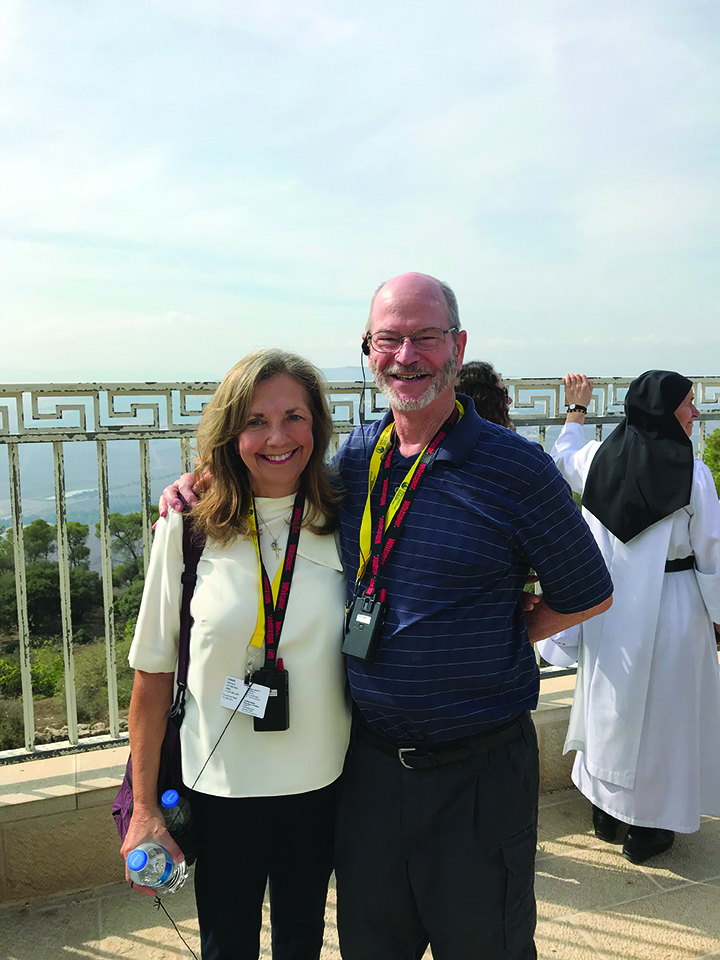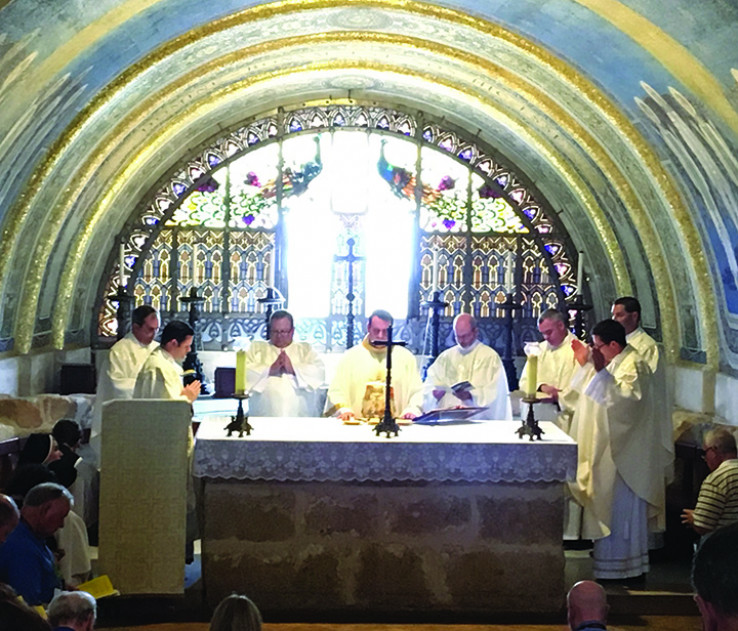By: Shelley Stone Wolfe
and Fr. Ken Wolfe,
Priest of the Ordinariate of the Chair of St. Peter
Our very first footsteps were taken in the context of our Christian families. Bible stories, often illustrated in Sunday school with flannelgraphs, are among the most vivid memories my husband and I have from childhood.
Our individual spiritual journeys led each of us to seminary, where we earned Master of Divinity degrees and Ken earned a Doctor of Ministry degree. Ultimately, our faith in Christ led us from Protestant and Anglican churches into full communion with the Roman Catholic Church. So, we had already traveled a long way both separately and together, when we decided to make a pilgrimage to the Holy Land.
Our pilgrimage began in Tiberius at a lovely hotel by the Sea of Galilee. We awoke after a 29-hour, 7,432-mile trip and stepped out on our balcony to the sight of a misty, calm Sea of Galilee. It was the setting where Jesus called disciples, who became fishers of men. We saw the water that Jesus walked on, the very location where Jesus commanded the wind and the waves to cease, the water that was once home to the two fishes carried as lunch by a little boy that would feed 5,000 upon being blessed by Jesus.
We visited Cana of Galilee, where Bishop Stephen Lopes blessed the marriages of all married pilgrims. One of our stellar guides had our group (including a bishop, six priests, four deacons and two religious) enrapt as he took us back over 2,000 years to the wedding in Cana of Galilee, where Jesus’ mom turned to him expectantly and told him the wine for the reception had run out. Our guide’s commentary on Jesus’ first miracle was expansive, but what was most gripping for us was the direct link of this miracle to the fulfillment of Jesus’ salvific mission—his death on the cross and his resurrection in victory over sin and death.

Our guide explained the jars of water used in Jesus’ miracle were six large, stone cisterns that held in reserve water used for cleansing. What the guests could not know that day was that the cleansing water Jesus turned into wine had a far greater implication than simply providing a lovely party for one bride and groom from Nazareth.
In Judaism, the number seven is the most sacred number, and signifies completeness. When Jesus instituted the Eucharist at the Last Supper with his disciples in the Upper Room, he took the cup of wine and said, “This is my blood, which is poured out for many for the forgiveness of sins.” At these words, Jesus revealed he was the seventh vessel, from transforming cleansing water to shedding cleansing blood on the cross. Jesus was and is the completion of victory over sin and death once and for all.
Our pilgrimage, organized by Magnificat Travel, far exceeded our expectations. Our escorts Kelli Davis and Deacon Juan Pagán, and our guides, who helped to make Christ even more visible to us yesterday, today, and forever, are deeply committed and articulate Christians. The logistics of this pilgrimage were seamlessly planned and executed, allowing us to relax and absorb the sacred lessons the Holy Land provides. As a result, our understanding of our Christian roots revealed in Scripture has been deeply enriched.


